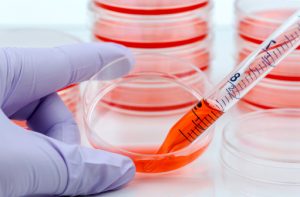
Basically, through the study, they were hoping to squash abnormal blood vessel growth that often causes different eye diseases, like diabetic retinopathy and age-related macular degeneration. During the study, the team of researchers observed that the amniotic stem cells traveled effortlessly to the retinas of the mice and were able to stop the abnormal growth, thanks to the growth factors secreted by the cells.
The details of the study are currently available on-line and will soon be published in Cell Transplantation.
MSCs have three distinct advantages in stem cell treatment.
One, as they are multipotent, they can easily self-renew and differentiate into a variety of specialized cell types, such as chondrocytes (cartilage cells), myocardiocytes (heart muscle cells), osteoblasts (cells that contribute to bone formation), adipocytes (fat cells), and neuron-like cells (nervous system cells).
Two, MSCs are able to moderate the immune reaction and decrease local inflammation.
And three, they can be isolated from a few different sources, such as fat tissues, umbilical cord blood, tendons and bone marrow, making it easier to extract and transplant the MSCs for therapeutic purposes.
Because of these advantages, MSCs have been effectively transplanted in several disease models where they have displayed many helpful benefits.
However, there is a theory that that the multipotent stem cells taken from human placenta may have more growth factors than those derived from other sources, such as fat or bone.
Another ‘like’ for placenta over other sources was the abundance of placental tissue, and the ease with which the stem cells could be isolated from growth factor-rich tissues.
According to study co-author Dr. Jisook Moon from the department of engineering and applied bioscience at CHA University in Seoul, Korea, stem cells derived from the placenta are strong in immune-modulatory functions.
As part of the study, the AMSCs were introduced into the mice via intraperitoneal injection. The ability of these cells to migrate from the site of injection to the injured tissue in the eye was confirmed by the detection of the transplanted cells in the retina. Normally the blood brain barrier restricts this type of movement, so confirming that this cross-over could take place was crucial to confirm the AMSCs are viable candidates for treatment of retinopathy.
Future study and analysis will be needed to confirm the effect of AMSCs on abnormal blood vessel growth the data collected by the researchers show how these cells exert their therapeutic effects.
The researchers marvel that a tissue that would normally be discarded as biomedical waste can, through the use of therapeutic purposes, be beneficial without using invasive procedures.
While it is still not clear how effective AMSC transplantation would be for treating eye diseases in humans, this study is a step in the right direction for upping the feasibility of stem cell therapy in clinical practice.